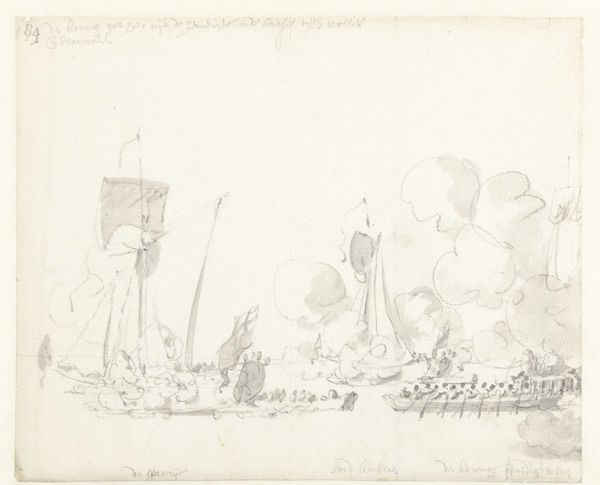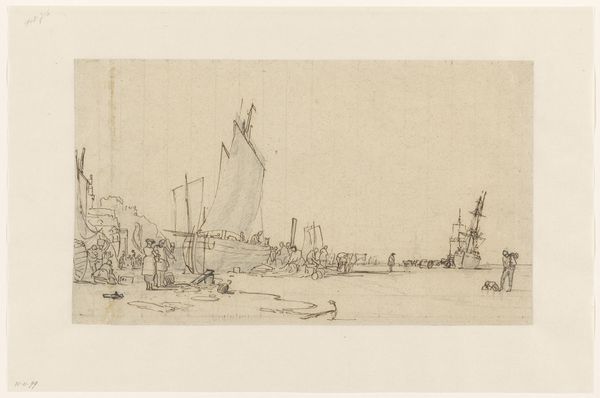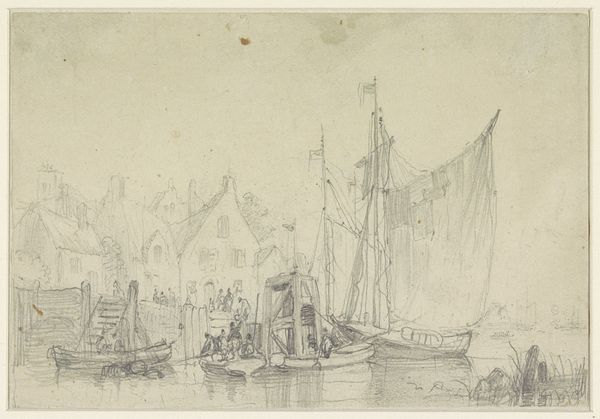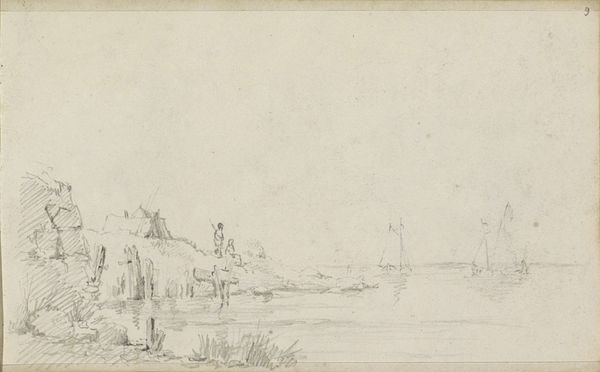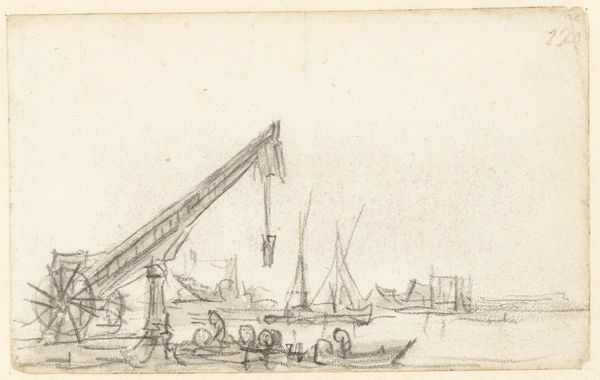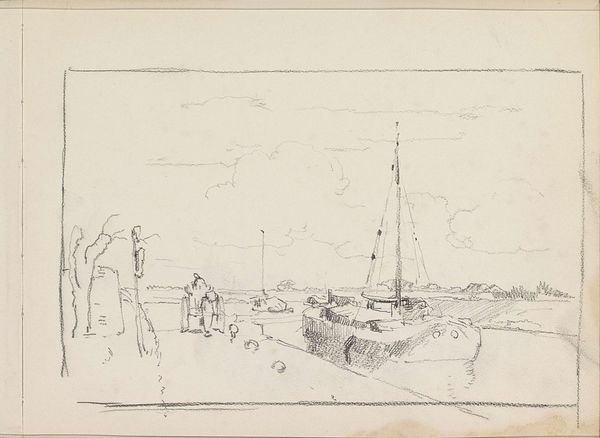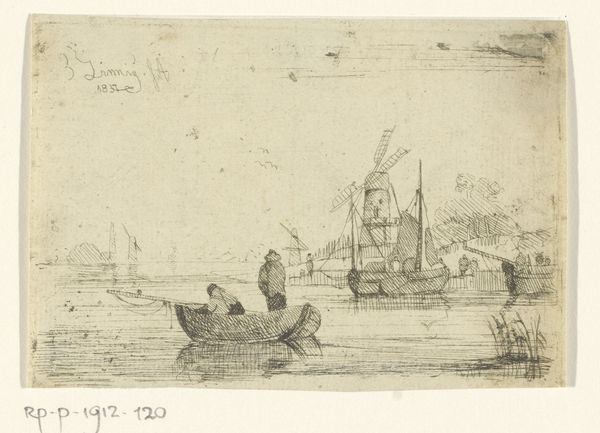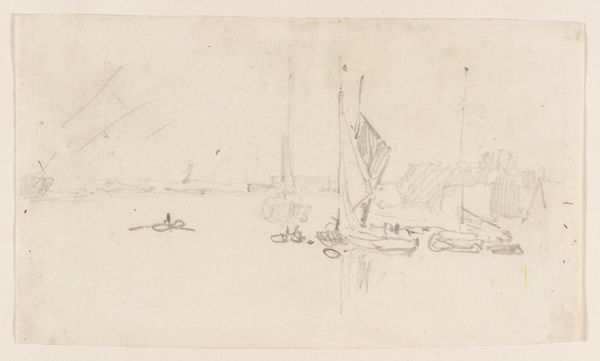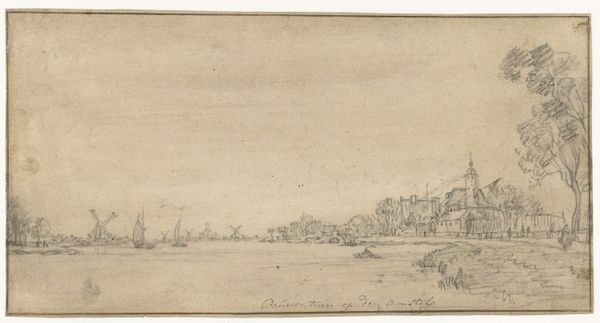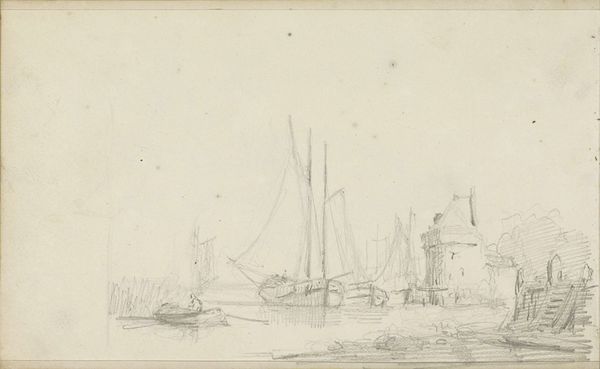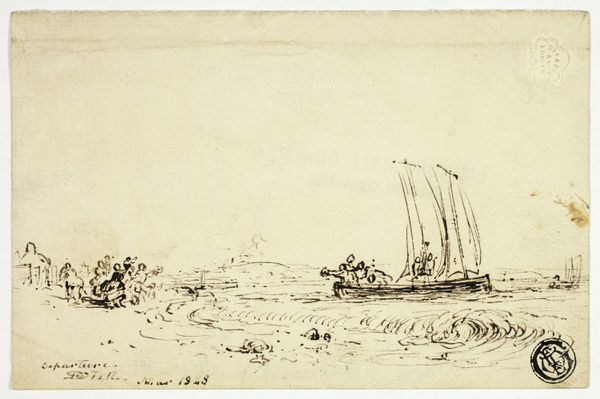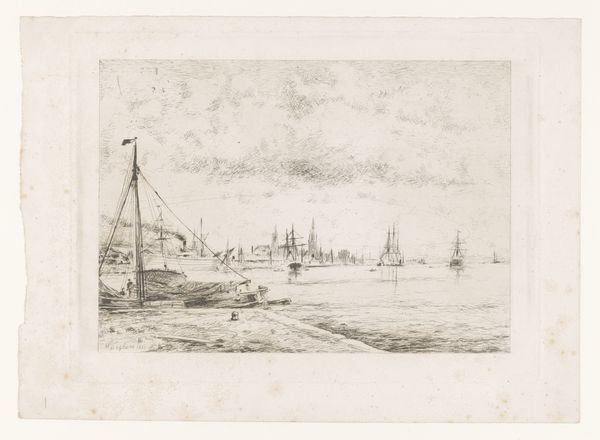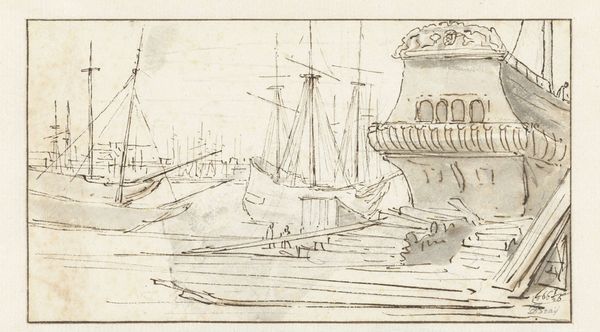
drawing, print, paper, ink, chalk, graphite
#
drawing
#
dutch-golden-age
# print
#
landscape
#
paper
#
ink
#
ink drawing experimentation
#
chalk
#
graphite
#
genre-painting
Dimensions: 163 × 427 mm
Copyright: Public Domain
Curator: Look at this drawing, "Sailing Ships in Harbor near Windmill" by Willem van de Velde II. It’s an ink drawing with chalk and graphite on paper. I'm struck by the dynamic sense of labor embedded in this harbor scene, how different hands came together to build these ships and the windmill, each stroke carrying that history. Editor: Immediately, I am drawn to its quiet stillness. There is an air of contemplation amidst this working harbor, with ships at rest near a traditional windmill. What stories do these silhouetted figures hold within this scene? Curator: Exactly! Van de Velde, working in the Dutch Golden Age, captured maritime life. Consider the ships. These were tools of global trade, conduits for colonialism. We can explore themes of identity and power dynamics inherent in these historical tradescapes. Editor: I’m particularly interested in the process he employed. The delicate lines of ink, accented with chalk, illustrate the materials he had at his disposal, creating varying textures to bring dimension to this expansive scene. Curator: Absolutely, and by layering mediums, van de Velde alludes to class tensions. Were these merchant vessels returning with exotic wares while common laborers toiled nearby, unseen and unsung? He compels us to ask tough questions about a stratified society. Editor: Indeed. I wonder if his intention was also to elevate shipbuilding and milling into noble, necessary occupations by depicting them as closely intertwined with daily life along the port. There seems to be beauty found in simple construction that is rarely considered "high art." Curator: Precisely, van de Velde’s harbors were economic engines, sources of wealth and cultural exchange. Let's view his artwork as historical documents, rich with data on colonialism and resistance, each ink stroke telling multiple stories. Editor: By paying attention to the details – the angle of the sails, the construction of the windmill – we find value in the ways everyday activities helped construct identities during a period of growth and progress through industrial manufacturing! Curator: This examination compels a fresh examination of narratives told and untold; van de Velde gives insight on complex socioeconomic landscapes that helped to build nations. Editor: Through material observation we’ve deepened the richness within the drawing itself and brought forward historical ideas that extend beyond subject matters present here!
Comments
No comments
Be the first to comment and join the conversation on the ultimate creative platform.
